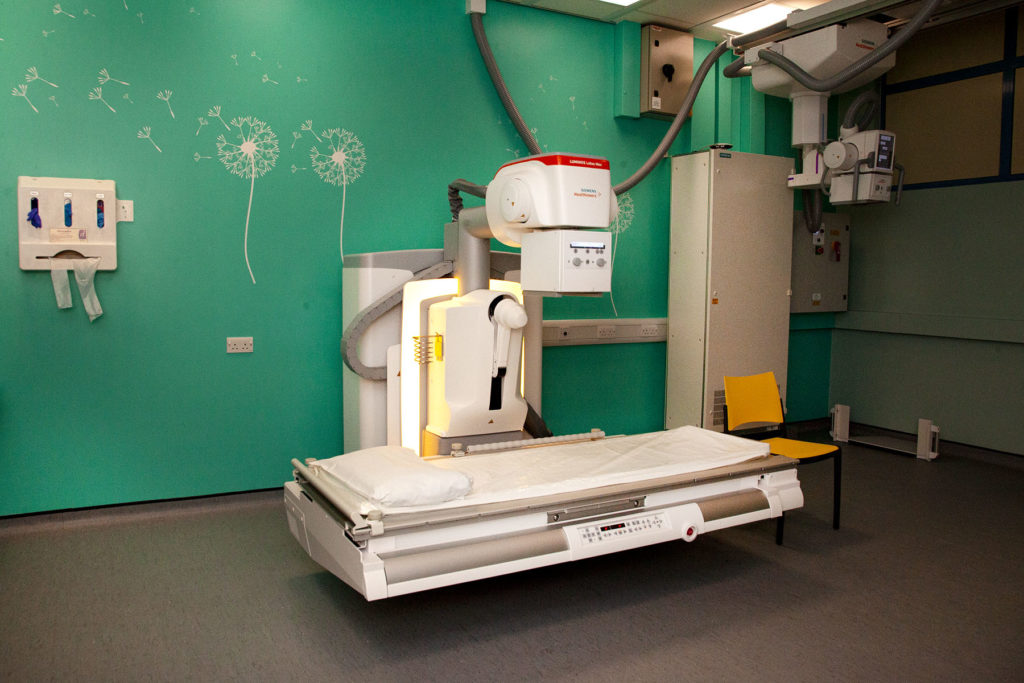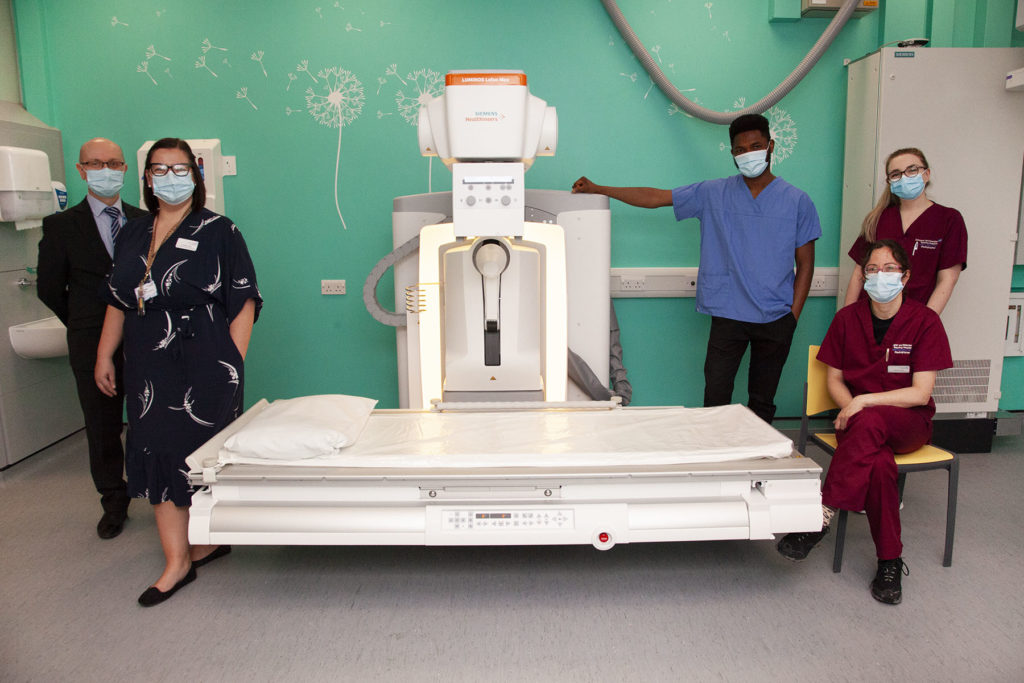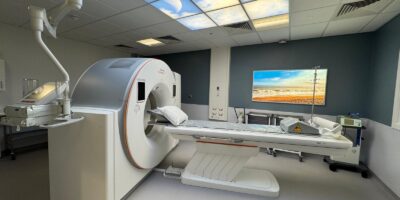Fluoroscopy is a medical procedure that makes a real-time video of the movements inside a part of the body by passing x-rays through it over a period of time. Fluoroscopy is commonly used to check how a patient’s stomach and intestines are working for example if food is being properly swallowed, amongst many other investigations and examinations.
The new suite at DRI features a Siemens Luminos Lotus Max, a two-in-one fluoroscopy and radiography machine, which will enable the Trust’s radiology team to undertake digital film imaging, as well as the aforementioned procedure.

Now in operation, the service supports crucial diagnostics within endoscopy, speech and language therapy, as well as barium studies and urology and Gynaecology dynamic studies, to name a few.
The hybrid nature of the Fluoroscopy room allows staff to use it for all plain film imaging from any source, improving waiting times and accessibility for all. The room is particular useful for those with complex needs, disabled as well as paediatric patients due to the extra adjustability of the equipment to accommodate individual requirements. For example, the table goes low enough for children to get on unassisted, the table can go vertically with the patient on it, so helping moving and handling. For patients who cannot lie flat, the team can X-ray spines and knees standing whilst they are fully and safely supported from behind.
Jennifer Tilley, Lead General Radiographer at Doncaster and Bassetlaw Teaching Hospitals, said: “We are absolutely thrilled with our fluoroscopy room and I want to thank everybody involved in its creation. This vital new facility brings the general x-ray department at DRI further into the modern era of technology and capabilities. It is the first deployment of this specification in the country and I know it will have a significant impact on the work we do here, ensuring patients get the very best care.”
While much of the budget of the project was assigned to the procurement of the specific technology required, the team were also keen to ensure that the clinical environment was calming for those undergoing examinations, and featured warm colours and mood lighting.

Jennifer concludes: “As we move forward and recover from the pandemic, medical imaging and our overall diagnostic capacity will be absolutely key to tackling the backlog of activity which has accumulated over the past two years. With this in mind, our final Computered Radiology room on this site is also being refurbished in the next month which will mean we have a fully digital general X-ray department at Doncaster Royal Infirmary, and will enable us to further develop our capacity on our other sites in the not too distant future.
Doncaster and Bassetlaw Teaching Hospitals is made up of Doncaster Royal Infirmary, Bassetlaw Hospital and Montagu Hospital in addition to a number of external clinical sites. One of the largest providers within the region, the Trust cares for approximately 500,000 patients each and every year, spanning two counties which include both urban and rural communities.



